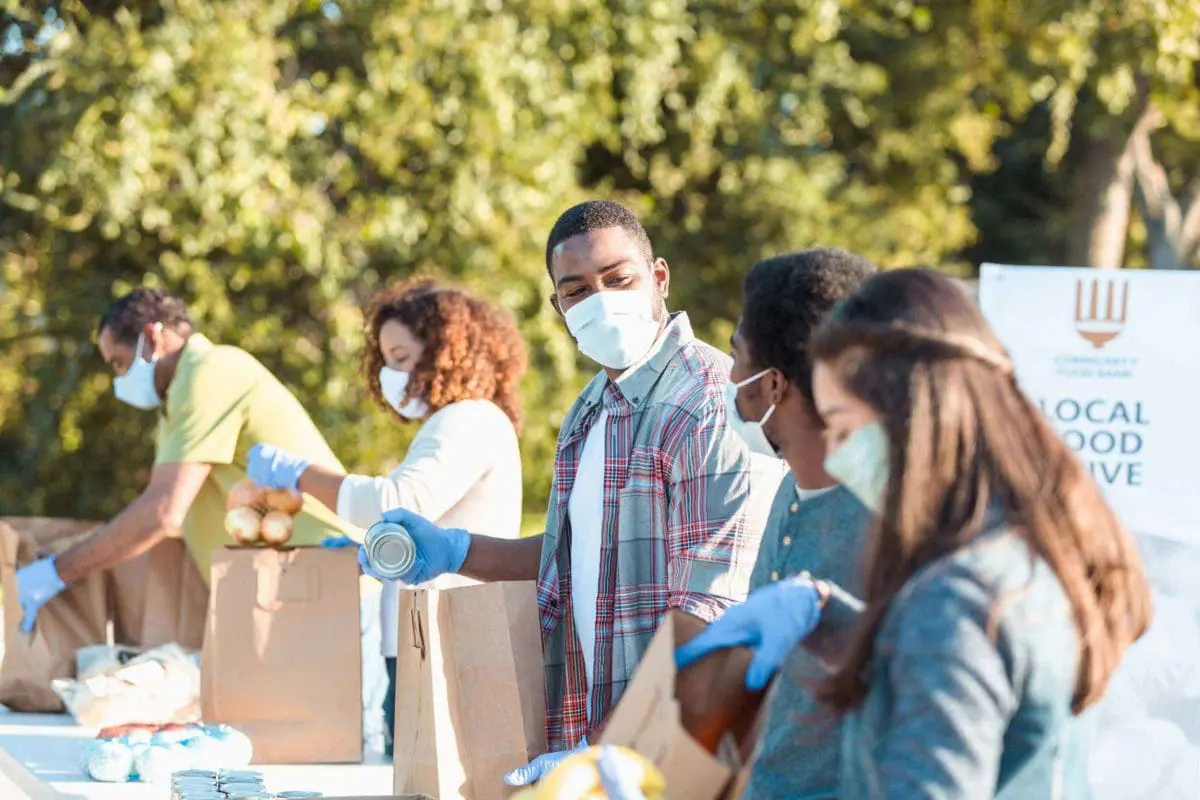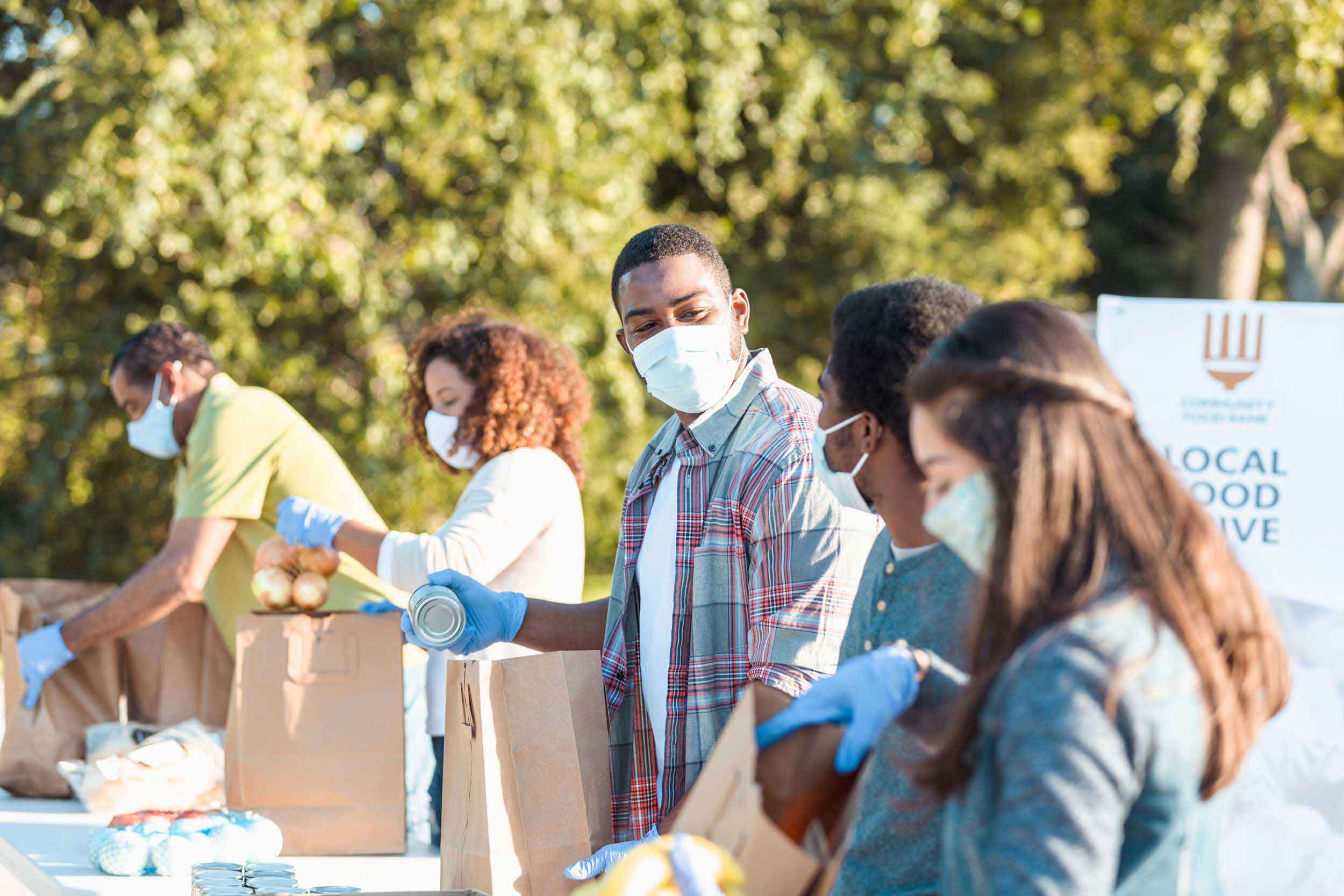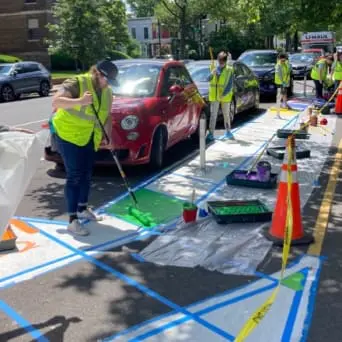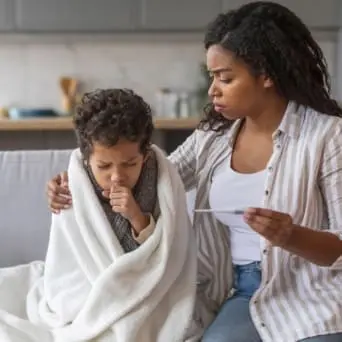Approximately 10.5% of US households were food insecure at some point in 2019, and this number has only been exacerbated by the COVID-19 pandemic. In addition to pre-existing barriers to food equity, COVID-19 has presented a number of unique institutional and logistical challenges to addressing food insecurity in the US. The pandemic has made it increasingly difficult for populations already deeply food insecure to access important resources, and those who exist at the intersection of multiple forces of disadvantage face even greater hardship.
Low-income seniors are among a number of groups that face compounded food insecurity challenges. According to a report published by the CDC in September, risk for developing a severe COVID-19 related illness increases proportionately with age. This has limited the scope of in-person food security initiatives targeted towards senior citizens. Senior food banks have suspended donation collection and distribution efforts, senior centers have temporarily stopped their group meal events, and even volunteers who run these programs are reluctant to put themselves and a vulnerable population at risk of exposure. If a senior is low-income and was unable to afford food before the pandemic, then they are transitively unable to stock up on food or utilize safe food delivery services such as Instacart–precautions those with resources have the privilege of taking. Challenges created by the COVID-19 pandemic intensify existing economic insecurities, making it difficult for low-income seniors to seek help.
School-aged children and families are facing a similar struggle. Children who come from families at or below the poverty line receive free or reduced-price meals at school, and because the pandemic has forced a transition to online learning, many students are not getting enough food to eat. While a number of school districts have begun free meal pick-up programs for students that qualify for subsidized meals, some low-income students may face transportation barriers, which make it difficult for them to pick up the meals. In Arizona’s Tucson Unified School District, for example, the number of meals picked-up by students and their families dropped from pre-pandemic levels by approximately 90%. Families that were struggling financially before the pandemic are now facing even more economic disadvantages, as the pandemic has accelerated furloughs, layoffs, and created other employment disruptions. These challenges are significant and greatly affect the ability of individuals to purchase and access quality, nutritious food.
Despite these challenges, some cities and states are developing innovative solutions to the food security barriers presented by COVID-19. On the policy side, state public service agencies are requesting USDA waivers to expand the scope of SNAP and WIC programs. For instance, Arizona requested that SNAP be expanded to prepared and pre-packaged meals, while California requested that SNAP be eligible for grocery home delivery. Cities like Seattle are also offering additional cash benefits for SNAP and WIC beneficiaries and expanded emergency federal assistance through the CARES Act—efforts that are casting a wide net in providing financial assistance to food-insecure groups. Some states are even offering assistance specifically to those working in the food industry affected by the pandemic. As an example, jurisdictions are considering policies that would expand benefits such as paid family leave and healthcare coverage to food supply chain workers and ensure the safety of workers by providing mandatory access to personal protective equipment.
In addition to these necessary COVID-19 response efforts, many places are also looking at investing in solutions beyond immediate policy changes. The pandemic caused a 400% spike in food assistance requests in Chicago, prompting Lakeview Pantry to expand their operations by partnering with the Chicago Cubs, temporarily converting the home team’s stadium into a satellite food packing and distribution site until the baseball season resumed. Some school districts across the country are restructuring their school meal distribution programs to allow students to pick up meals for the week in bulk, reducing transportation barriers faced by students who live far away from their local schools. Cities are also overhauling traditional soup-kitchen models to deliver meals to vulnerable populations under social distancing guidelines. New York City, for example, has pioneered a “pop-up pantry” initiative, which brings healthy food directly to underserved communities. Similarly, the city of Jacksonville has partnered with the Jacksonville Transportation Authority to provide home delivery services for immobile groups.
There has also been a surge in public-private partnerships between city governments and local non-profit organizations, allowing communities to leverage the power of independent philanthropy to address food-insecurity. World Central Kitchen, a non-profit organization founded in 2010 by chef José Andrés, has pivoted its focus from natural disaster hunger relief to providing individually packaged meals to people affected by COVID-19, while simultaneously offering job opportunities to restaurant workers displaced by the pandemic. Fruistitute, Food Forward and artist Julia Sherman have launched a campaign to help people access fresh produce by organizing a socially distanced fruit swap in Los Angeles. Similarly, Miami-Dade county has partnered with The Adrienne Arsht-Rockefeller Foundation Resilience Center to develop the first ever community resilience pod–a shipping container that distributes food boxes while continuing to teach the local community about important issues such as climate change and its consequences. Communities and cities are not only restructuring their hunger prevention programs to comply with pandemic-era guidelines, but are also using this unprecedented moment as an opportunity to create sustainable solutions to address food-insecurity. This commitment to sustainability and long-term resilience is critical for local leaders in order to address food insecurity at its root beyond the pandemic.
It is easy to understand how health outcomes are entangled with other systems in theory, but it wasn’t until this pandemic forced us to critically reevaluate the efficacy of our existing institutions that we saw how deep and complex this network truly is. The issue of food insecurity is not that certain people are not getting enough to eat–there are larger forces at play that create inequitable outcomes for vulnerable populations. Food insecurity is really a consequence of economic insecurity, as seen with the unique challenges faced by low-income seniors and families during COVID-19. As we stand on the brink of change, tasked with finally curbing a global pandemic and cleaning up after the mess it will leave behind, it is important to understand the implication of core social, political and economic pillars on every health outcome.
*Editor’s Note: Isha is a sophomore at the University of Maryland-College Park, serving as CityHealth’s fall intern. This post was developed as part of CityHealth’s commitment to support staff professional development. All posts are reviewed, approved, and endorsed by CityHealth.






